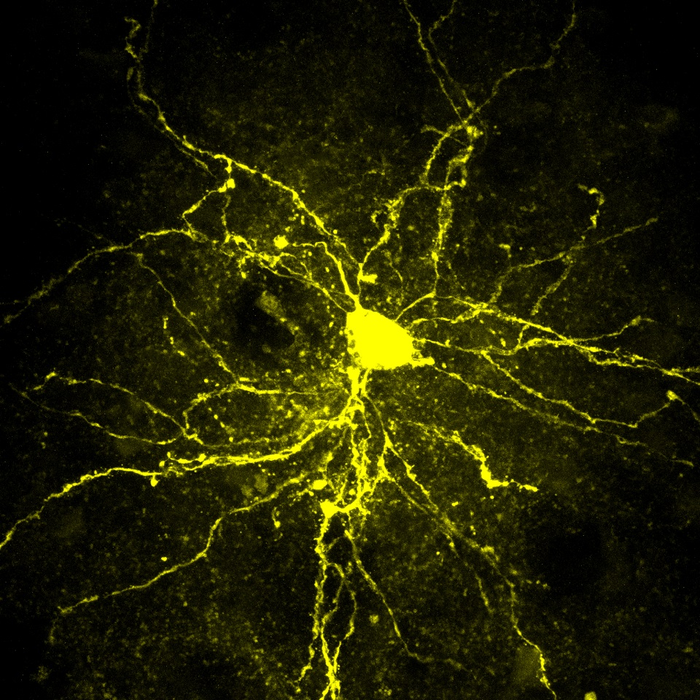
image: Medium Spiny Neuron located in the nucleus accumbens, one of the neural networks of the reward system.
View Continue reading
Credit: Camilla Bellone – UNIGE
Camilla Bellone is a professor in Basic Neurosciences at UNIGE Faculty of Medicine. She also directs the Synapsy national centre of competence in research. Her research had already shown the role of the reward system as a factor in autistic mice’s social interaction deficit. In fact, the reward system is closely tied to the motivation that drives individuals into interacting with their peers. This is because it activates the neuronal network that makes up the reward system.
What are the molecular and cell mechanisms that cause the social interaction deficits? Scientists studied heterozygous mice (i.e. mice that have one of the two copies of the SHANK3 gene deleted) to understand the process and determine how symptoms manifest. Mice that have one of two copies of the SHANK3 gene deleted, but are not affected by social behavioural disorders, are called heterozygous mice. This is one of the most common causes of autism with 1-2% of all cases.
“Humans carry a mutation in only one of the two copies of SHANK3, a gene that is essential for the functioning of synapses and communication between neurons,” points out Camilla Bellone. “In animal models of the disease, however, mutation of a single copy of SHANK3 only slightly affects the behaviour of mice, which explains why the behavioural phenotypes observed are not homogeneous”.
Neuronal hyperexcitability: What is its role?
In order to identify other genes whose expression had been altered, the researchers first inhibited SHANK3 expression in neural networks of reward system. Numerous genes that are related to the inflammatory process were identified, including Trpv4, which also plays a role in the functioning and communication of neurons. “By inducing massive inflammation, we observed an overexpression of Trpv4, which then led to a neuronal hyperexcitability concomitant to the onset of social avoidance behaviours that our mice did not exhibit until now,” stresses Camilla Bellone. The scientists were also able restore normal social behaviour by inhibiting Trpv4.
“This provides evidence that autistic disorders are indeed the result of an interaction between a genetic susceptibility and an external trigger – in this case, massive inflammation. Neuronal hyperexcitability disrupts communication channels, thereby altering the brain circuits governing social behaviour.” This would also explain why the same genetic predisposition can lead, depending on the environmental factors encountered and the type of inflammation they trigger, to a diversity of symptoms of equally variable severity.
Irreversible damage during development?
The inflammation was inducible in adult animals during this study. The resulting social behavior deficit was not only reverseable, but also disappeared naturally within a few days. “We now need to replicate our research during the critical phases of neurodevelopment — i.e. during gestation and immediately after birth — in order to observe the impact of hyperexcitability on the developing neural networks. This could damage the construction of neural networks beyond repairs,” says Camilla Bellone.
This study proves that inflammation can cause behavioural symptoms, even in the presence genetic vulnerability. It also highlights how important environmental factors are, which have been greatly underestimated up until now. It also highlights that we still need to understand the mechanisms behind autistic disorders in order to intervene effectively. Based on the individual patient’s gene-environment interactions, and inflammatory mechanisms, it is possible to identify a treatment to match the cellular or molecular modification in the brain circuits.
Journal
Molecular Psychiatry
Method of Research
News article
Research Subject
People
Article Title
Inhibition of Trpv4 rescues circuits and social deficits are unmasked by acute inflammation in a Shank3 mouse model Autism
Article Publication Date
12-Jan-2022
Disclaimer:AAAS and EurekAlert! EurekAlert is not responsible for the accuracy or reliability of the news releases. Contributing institutions or for the use any information through EurekAlert.


